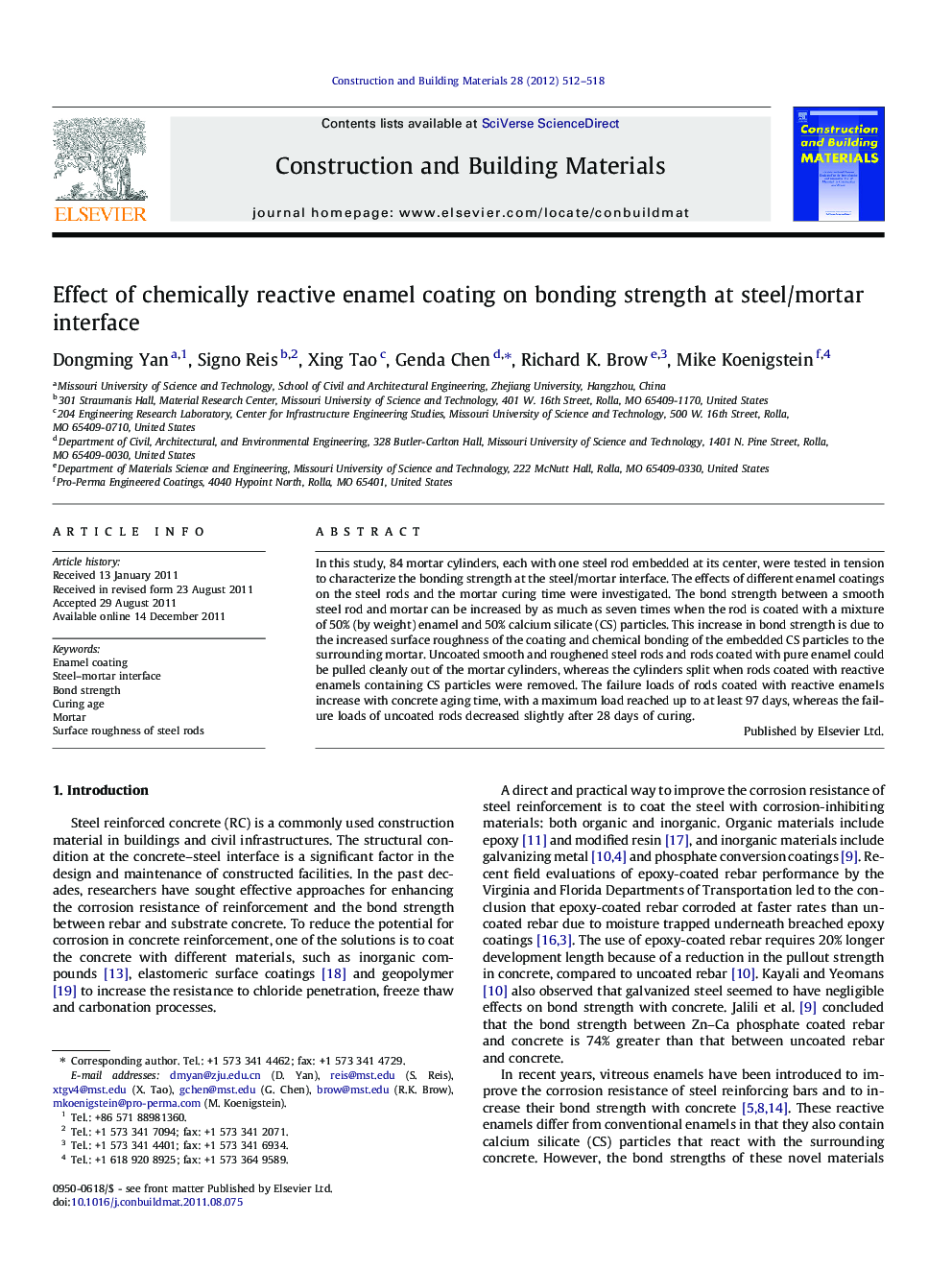| Article ID | Journal | Published Year | Pages | File Type |
|---|---|---|---|---|
| 259605 | Construction and Building Materials | 2012 | 7 Pages |
In this study, 84 mortar cylinders, each with one steel rod embedded at its center, were tested in tension to characterize the bonding strength at the steel/mortar interface. The effects of different enamel coatings on the steel rods and the mortar curing time were investigated. The bond strength between a smooth steel rod and mortar can be increased by as much as seven times when the rod is coated with a mixture of 50% (by weight) enamel and 50% calcium silicate (CS) particles. This increase in bond strength is due to the increased surface roughness of the coating and chemical bonding of the embedded CS particles to the surrounding mortar. Uncoated smooth and roughened steel rods and rods coated with pure enamel could be pulled cleanly out of the mortar cylinders, whereas the cylinders split when rods coated with reactive enamels containing CS particles were removed. The failure loads of rods coated with reactive enamels increase with concrete aging time, with a maximum load reached up to at least 97 days, whereas the failure loads of uncoated rods decreased slightly after 28 days of curing.
► Steel bonds mortar seven times more strongly when coated with 50/50 enamel. ► Bond increase results from both rough coating surfaces and chemical reactions. ► Uncoated steel rods and pure enamel coated rods are pulled out of mortar cylinders. ► Mortar cylinders split when rods are coated with 50/50 reactive enamels. ► The failure loads of rods coated with reactive enamels increase with concrete aging time.
